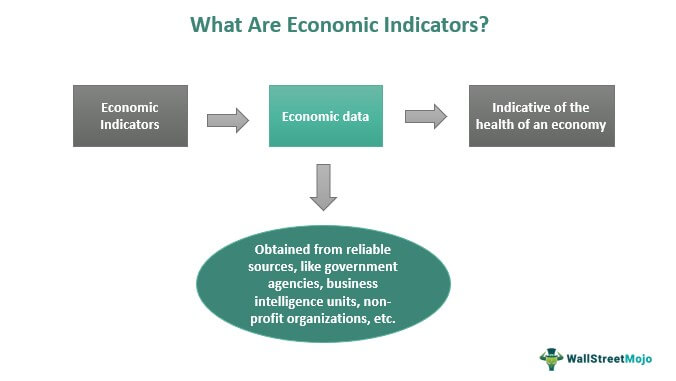
Established in 1911, the Central Bank of India holds a significant place in the Indian banking landscape. As one of the oldest and largest public sector banks in the country, it has played a pivotal role in the economic development of India. With its headquarters in Mumbai, the bank has a vast network of branches and ATMs spread across urban and rural areas, making banking accessible to millions.
The Central Bank of India is not just a financial institution; it is a cornerstone of the Indian economy, providing a range of services that cater to individuals, businesses, and government entities alike. The bank’s commitment to social responsibility is evident in its various initiatives aimed at promoting financial inclusion and literacy. It has consistently focused on empowering the underprivileged sections of society by offering tailored financial products.
Among these offerings, education loans stand out as a vital service that enables students to pursue higher education without the burden of financial constraints. The Central Bank of India recognizes the importance of education in shaping the future of individuals and, by extension, the nation, thus making education loans a priority in its portfolio.
Key Takeaways
- Central Bank of India is one of the oldest and largest commercial banks in India, established in 1911.
- The bank offers various types of education loans, including loans for higher studies in India and abroad, vocational courses, and skill development courses.
- Eligibility criteria for education loans include Indian nationality, admission to a recognized course, and a co-applicant with a stable source of income.
- Interest rates for education loans are competitive, and repayment options include moratorium period and flexible EMI options.
- The application process for education loans at Central Bank of India is simple and can be done online or at a branch, with quick approval and disbursement.
Types of Education Loans offered by Central Bank of India
The Central Bank of India offers a diverse range of education loans designed to meet the varying needs of students pursuing higher education both in India and abroad. One of the primary products is the “Central Bank of India Education Loan Scheme,” which caters to students enrolled in recognized institutions for undergraduate and postgraduate courses. This scheme covers a wide array of disciplines, including engineering, medicine, management, and arts, ensuring that students from different fields have access to financial support.
In addition to the standard education loan scheme, the bank also provides specialized loans for vocational courses and skill development programs. These loans are particularly beneficial for students who wish to pursue technical or vocational training that may not fall under traditional degree programs. Furthermore, the Central Bank of India has provisions for loans aimed at students seeking to study abroad, which often come with higher financial requirements due to international tuition fees and living expenses.
This comprehensive approach ensures that students have multiple avenues to secure funding for their educational aspirations.
Eligibility criteria for Education Loans

To qualify for an education loan from the Central Bank of India, applicants must meet specific eligibility criteria that ensure responsible lending practices. Generally, the primary applicant must be an Indian citizen and should have secured admission to a recognized educational institution. The courses can range from undergraduate to postgraduate levels, including professional courses.
Additionally, the age of the applicant is also considered; typically, students between 16 and 35 years are eligible to apply. The bank also evaluates the financial background of the applicant and their family. A co-borrower, usually a parent or guardian, is required to provide additional security for the loan.
This co-borrower must have a stable income source and a good credit history. The Central Bank of India may also consider the academic performance of the applicant as part of its assessment process. Students with strong academic records may find it easier to secure loans, as this reflects their commitment to their studies and potential for success.
Interest rates and repayment options
| Interest Rates | Repayment Options |
|---|---|
| Fixed Rate | Standard Repayment |
| Variable Rate | Graduated Repayment |
| Prime Rate | Income-Driven Repayment |
Interest rates on education loans from the Central Bank of India are competitive compared to other financial institutions, making them an attractive option for students. The rates can vary based on several factors, including the type of course, the amount borrowed, and whether the applicant has a prior relationship with the bank. Typically, interest rates for education loans can range from 8% to 10%, with some variations based on market conditions and government policies.
Repayment options are designed to be flexible and accommodating for students who may face financial challenges after graduation. The repayment period can extend up to 15 years, allowing borrowers ample time to secure employment and stabilize their finances before starting repayments. Additionally, there is often a moratorium period during which no repayments are required; this period usually lasts until six months after graduation or until the borrower secures employment, whichever comes first.
Such provisions are crucial in easing the financial burden on graduates as they transition into their professional lives.
Application process for Education Loans
Applying for an education loan with the Central Bank of India involves several steps that ensure a thorough evaluation of the applicant’s needs and circumstances. The process typically begins with filling out an application form available at any branch or on the bank’s official website. Applicants are encouraged to provide detailed information about their educational background, course details, and financial requirements.
Once the application is submitted, it undergoes an initial review by bank officials who assess eligibility based on the criteria mentioned earlier. If deemed eligible, applicants may be called for an interview where they can discuss their educational plans and financial needs in more detail. Following this, the bank will conduct a credit appraisal that includes verifying documents related to income, academic records, and admission confirmation from the educational institution.
Upon successful completion of this process, loan approval is granted, and funds are disbursed either directly to the institution or to the borrower as per the agreed terms.
Documents required for applying for an Education Loan

To facilitate a smooth application process for education loans at the Central Bank of India, applicants must prepare a comprehensive set of documents that substantiate their claims and eligibility. Key documents typically include proof of identity such as an Aadhaar card or passport, along with proof of residence like utility bills or rental agreements. These documents help establish the identity and address of the applicant.
Additionally, academic documents play a crucial role in the application process. This includes mark sheets from previous educational qualifications, admission letters from recognized institutions, and any entrance exam scores if applicable. Financial documents are equally important; applicants must provide income proof for themselves and their co-borrowers—this could be salary slips, income tax returns, or bank statements.
Finally, any collateral documents may be required if the loan amount exceeds a certain threshold; this could include property papers or fixed deposit receipts.
Benefits and advantages of choosing Central Bank of India for an Education Loan
Opting for an education loan from the Central Bank of India comes with numerous benefits that make it an appealing choice for students. One significant advantage is the bank’s extensive network across India, which ensures that customers can access services easily regardless of their location. This accessibility is particularly beneficial for students in rural areas who may not have many banking options available.
Moreover, Central Bank of India offers personalized customer service that helps guide applicants through every step of the loan process. The bank’s representatives are trained to assist students in understanding their options and making informed decisions about their financial futures. Additionally, borrowers can benefit from various schemes that offer interest concessions based on timely repayments or educational performance.
Such incentives not only reduce financial burdens but also encourage responsible borrowing habits among students.
Tips for managing and repaying Education Loans
Managing education loans effectively requires careful planning and discipline on the part of borrowers. One essential tip is to create a budget that accounts for all monthly expenses while factoring in loan repayments once they commence. By understanding their financial landscape early on, borrowers can avoid falling into debt traps that could jeopardize their financial stability.
Another critical aspect is maintaining open communication with the bank regarding any changes in financial circumstances. If borrowers encounter difficulties in making repayments due to unforeseen circumstances such as job loss or medical emergencies, it is advisable to reach out to the bank promptly. Many banks offer restructuring options or temporary relief measures that can ease repayment pressures during tough times.
Additionally, borrowers should consider setting up automatic payments to ensure timely repayments and avoid penalties associated with late payments. This not only helps maintain a good credit score but also instills a sense of discipline in managing finances post-education. Lastly, staying informed about any government schemes or subsidies available for education loan borrowers can provide additional financial relief and support throughout the repayment journey.
FAQs
What is Central Bank of India Education Loan?
Central Bank of India Education Loan is a financial product offered by Central Bank of India to help students pursue higher education in India or abroad. The loan covers tuition fees, hostel fees, examination fees, and other related expenses.
Who is eligible for Central Bank of India Education Loan?
Indian nationals who have secured admission to a recognized course in India or abroad are eligible for Central Bank of India Education Loan. The loan is also available for courses conducted by IIM, IIT, NIFT, etc.
What is the maximum loan amount offered by Central Bank of India for education?
The maximum loan amount for studies in India is Rs. 10 lakhs and for studies abroad is Rs. 20 lakhs.
What is the repayment period for Central Bank of India Education Loan?
The repayment period for Central Bank of India Education Loan is up to 15 years, including the moratorium period.
What is the interest rate for Central Bank of India Education Loan?
The interest rate for Central Bank of India Education Loan is competitive and is linked to the MCLR (Marginal Cost of Funds based Lending Rate).
What are the documents required to apply for Central Bank of India Education Loan?
The documents required for Central Bank of India Education Loan include proof of admission, mark sheets, fee details, identity proof, address proof, and income proof of the co-borrower.
Is collateral required for Central Bank of India Education Loan?
For loans up to Rs. 4 lakhs, no collateral is required. For loans above Rs. 4 lakhs and up to Rs. 7.5 lakhs, a third-party guarantee is needed. For loans above Rs. 7.5 lakhs, tangible collateral security is required.
Can the loan be used for studying abroad?
Yes, Central Bank of India Education Loan can be used for studying abroad as well as in India.










